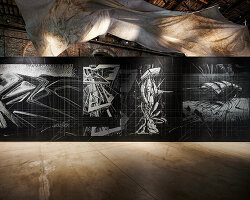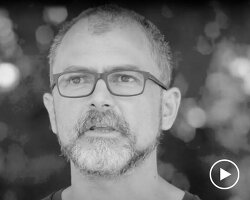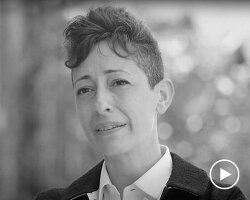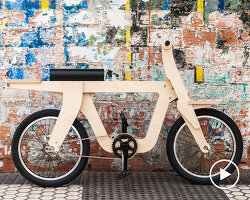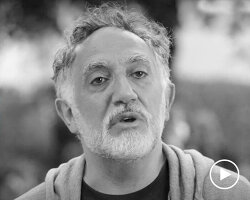marking uzbekistan’s first national participation at the venice architecture biennale is an exhibition curated by swiss architecture studio, christ & gantenbein, called mahalla: urban rural living. occupying a 16th century space in the arsenale, the exhibit immerses visitors in an abstract representation of a mahalla — a vernacular type of housing in uzbekistan. yellow frames outline the architecture at scale 1:1 while a soundscape by carlos casas recreates sounds of the local community and photos by bas prince frame characterful details.
the ‘three-dimensional collage’, as emanuel christ of christ & gantenbein describes it, forms just one part of an extensive research project undertaken by the architects, which meticulously documents these traditional neighborhoods. ahead of the venice architecture biennale 2021 opening, designboom spoke to christ in this interview below to discuss the value of community, the beauty of the everyday, and how this project responds to hashim sarkis‘ question, ‘how will we live together?’
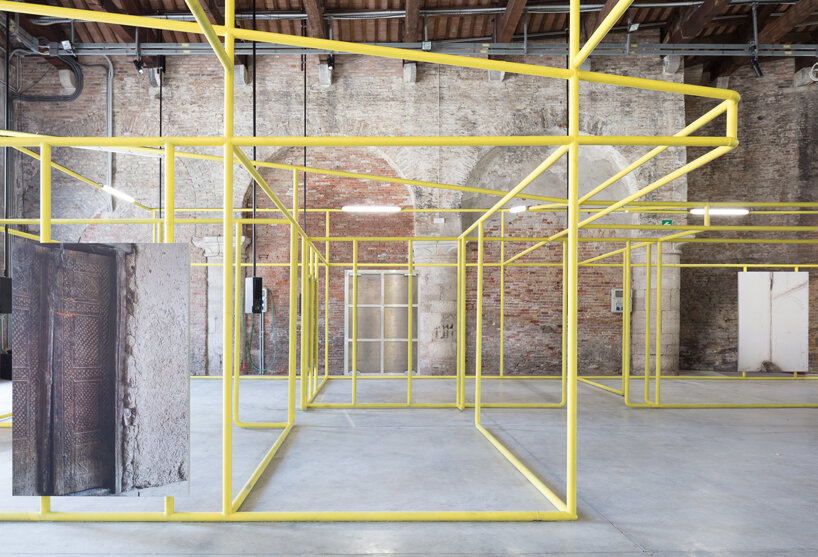
image © gerda studio
designboom (DB): what initially drew you to mahallas?
emanuel christ (EC): I was traveling to tashkent in uzbekistan for a renovation project of a cultural center, which didn’t happen. while we were in tashkent, we realized that we can contribute to something profoundly relevant through the expertise we gathered via our academic unit: to understand and document what’s there. our research unit at ETH zurich established an ongoing research project on what we call ‘the typology of the everyday’: we are investigating the normal case of urban architecture by mainly looking at big cities built in the 20th century. we started with something like a precondition, a field of interest, a working method, and some methodological and technical tools. from there, as it is for many research projects, it began with a coincidence.
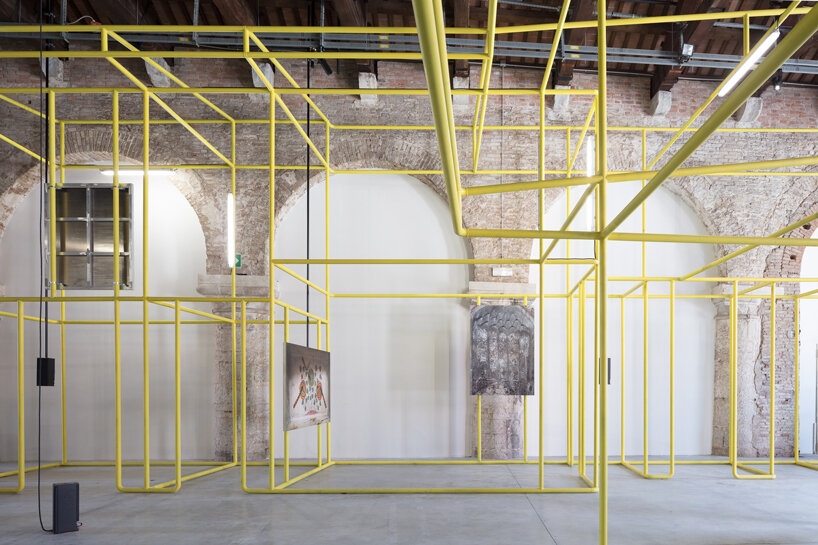
image © gerda studio
DB: tell us a little about what the project entailed and this exhibition here at the 2021 venice architecture biennale.
EC: our involvement with the mahalla is, in the first place, a survey project that stands for itself. then, based on that research, we designed this presentation here in venice.
we surveyed some of tashkent’s mahallas, with drones to document these vast stretches of the city. we also used 3D scanners to produce a fantastic set of data about these vernacular neighborhoods. out of these elements, we created different forms of publications and documentation; this is the substance of the project. it is crucial to mention that we collaborated with students of the CCA lab in tashkent, who interviewed people, visited houses in the mahallas, and significantly contributed to this project.
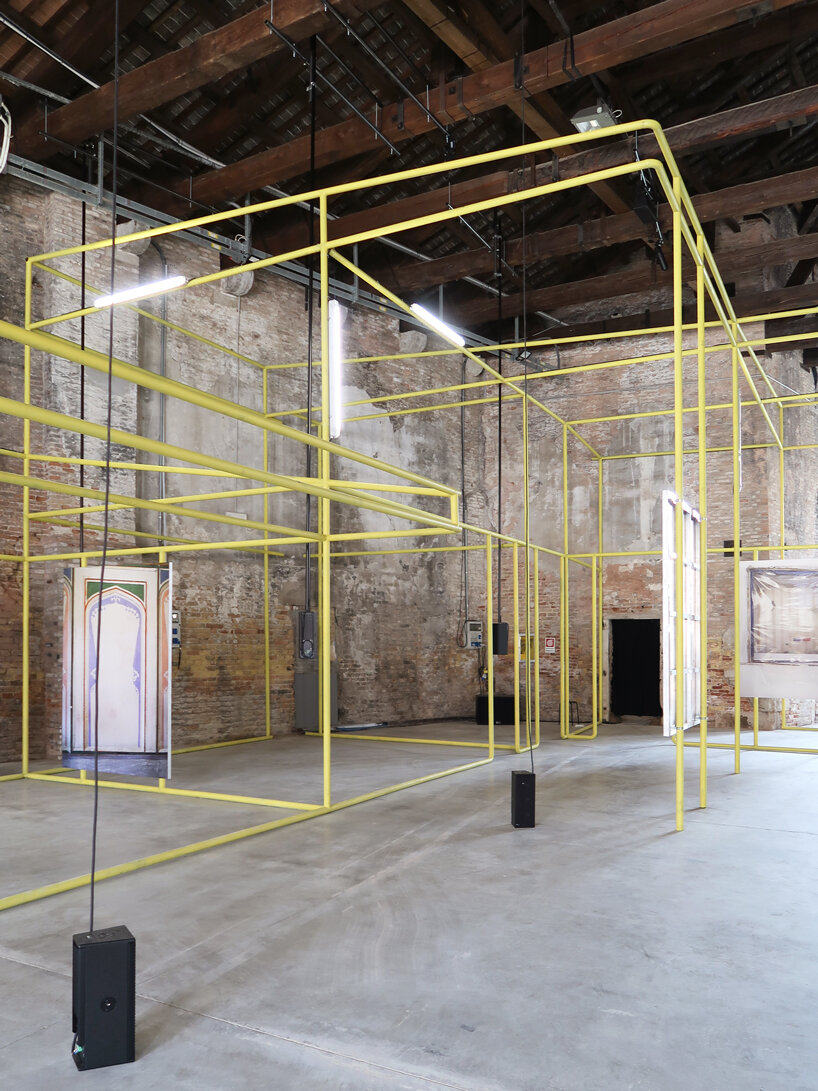
image © designboom
DB: how is the survey represented in venice?
EC: the exhibition in venice has many layers. a special edition boxed compilation of documents presents the results from our survey, published by humboldt books. a catalog provides theoretical insights about the mahalla from local and international academics. an app allows users to virtually experience the houses we documented via point cloud models. we also integrated the work of the CCA lab students into the exhibition. they contributed this emblematic piece of furniture and weaving that stands in the central space of the pavilion and also published a fanzine which is a lexicon about mahallas.
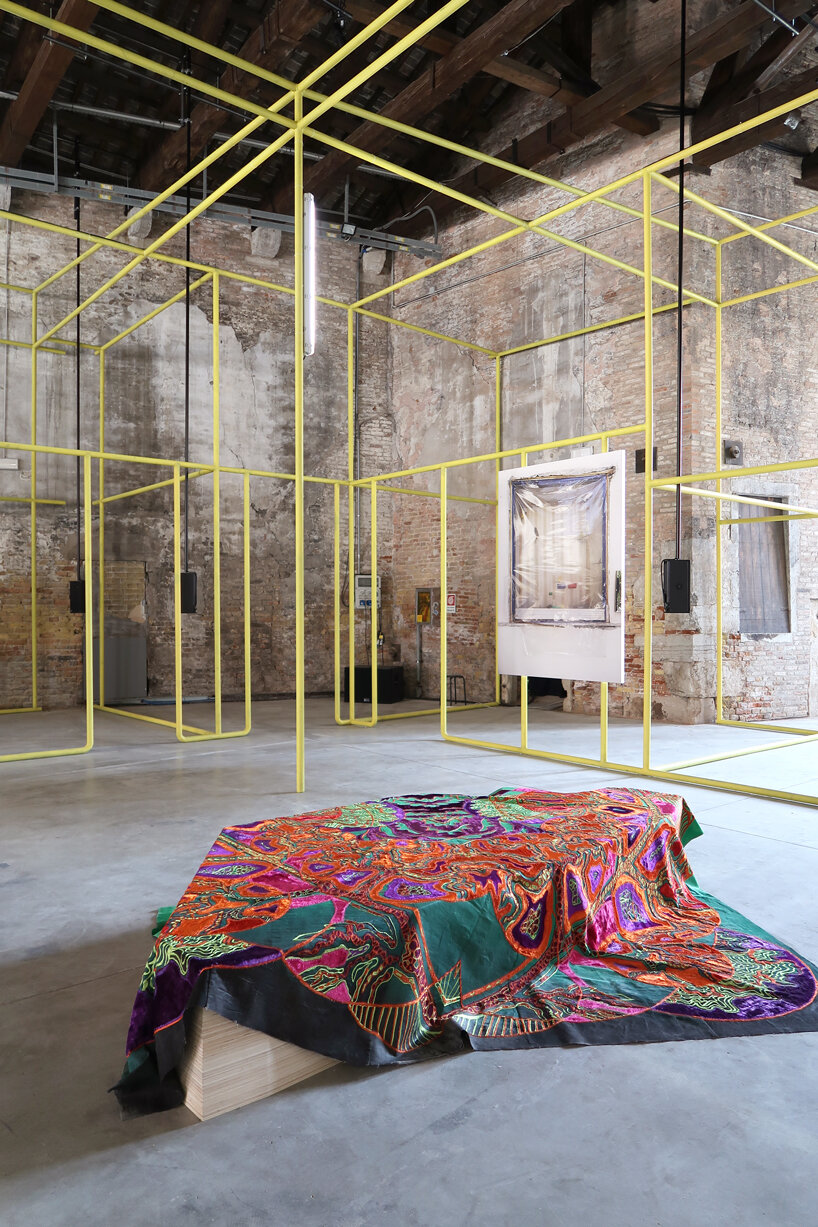
image © designboom
DB: what about artist collaborations?
EC: we worked with two artists who were part of our research group: carlos casas did atmospherical sound recordings, and bas prince took fascinating pictures. then we assembled these photos and speakers in a large-scale 1:1 model that is now occupying our space here in venice. the inscribed wireframe construction, which is an actual piece of architecture made up of a system of steel tubes represents, to a certain extent, the idea of a typical courtyard house as you will find it in uzbekistan as it is documented in our research.
carlos’ soundscapes are animating and bringing life into some of the spaces of that house that we can visit here in venice. bas’ photographs provide an impression or a hint of some of the houses’ details.
ultimately, we like to call the result shown at the biennale a ‘three-dimensional collage’. I also like to call it an ‘intellectual mental construction site’. we wanted to create something contemporary that gives visitors room for interpretation and imagination. it is not something finished or something that is trying to freeze and protect a phenomenon but rather the opposite: we are interested in something that identifies some aspects of a possible way of living together.
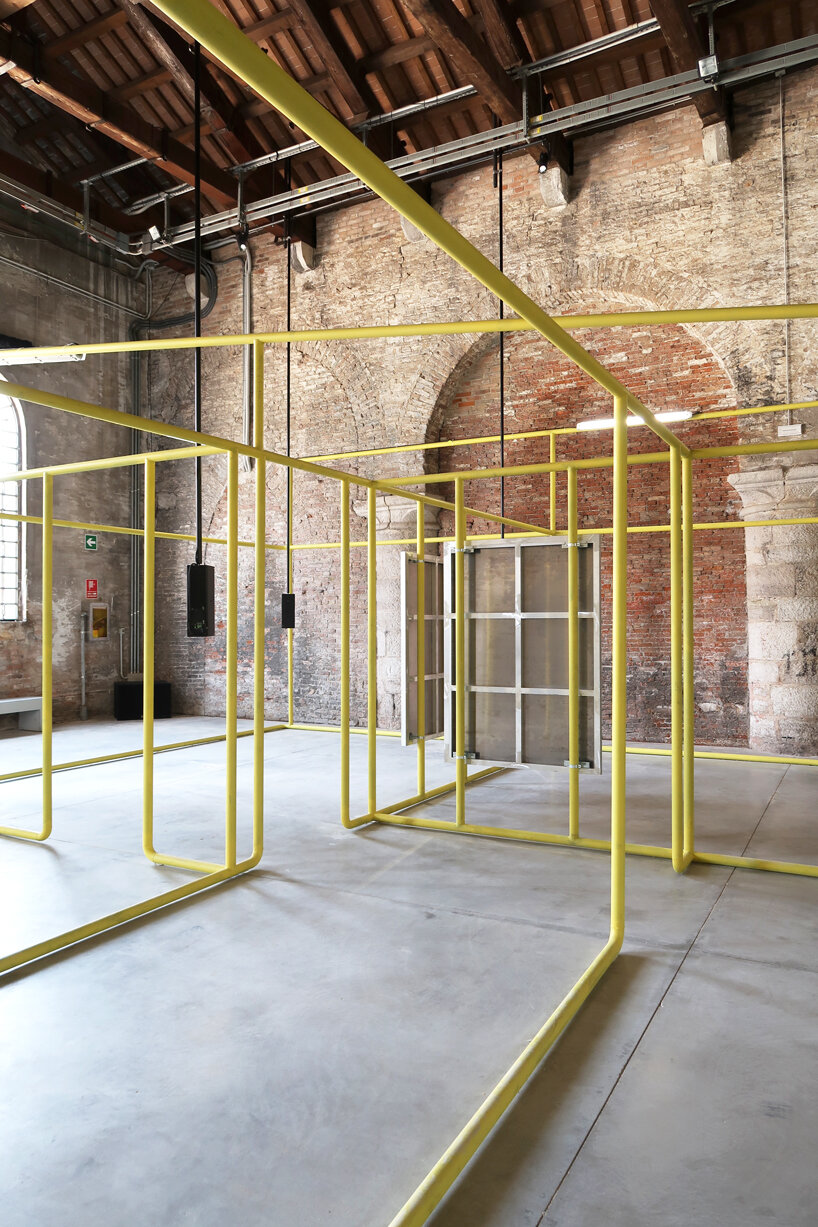
image © designboom
DB: is the project purely about documentation or do you imagine a way to apply what you’ve learned here into a contemporary setting?
EC: ideally, it would impact how the society and the community in tashkent think about their own city. ultimately, it could have an influence and an effect on how these neighborhoods are kept, transformed, and maybe improved. very often nowadays, as in other countries, there is a risk that these types of areas disappear because there’s certain pressure for generic new constructions. I do not want to be a moralistic voice from the outside. we must be modest and humble and keep an appropriate distance. that’s why I’m insisting so much on the scientific aspect: we could identify a series of facts that speak for themselves.
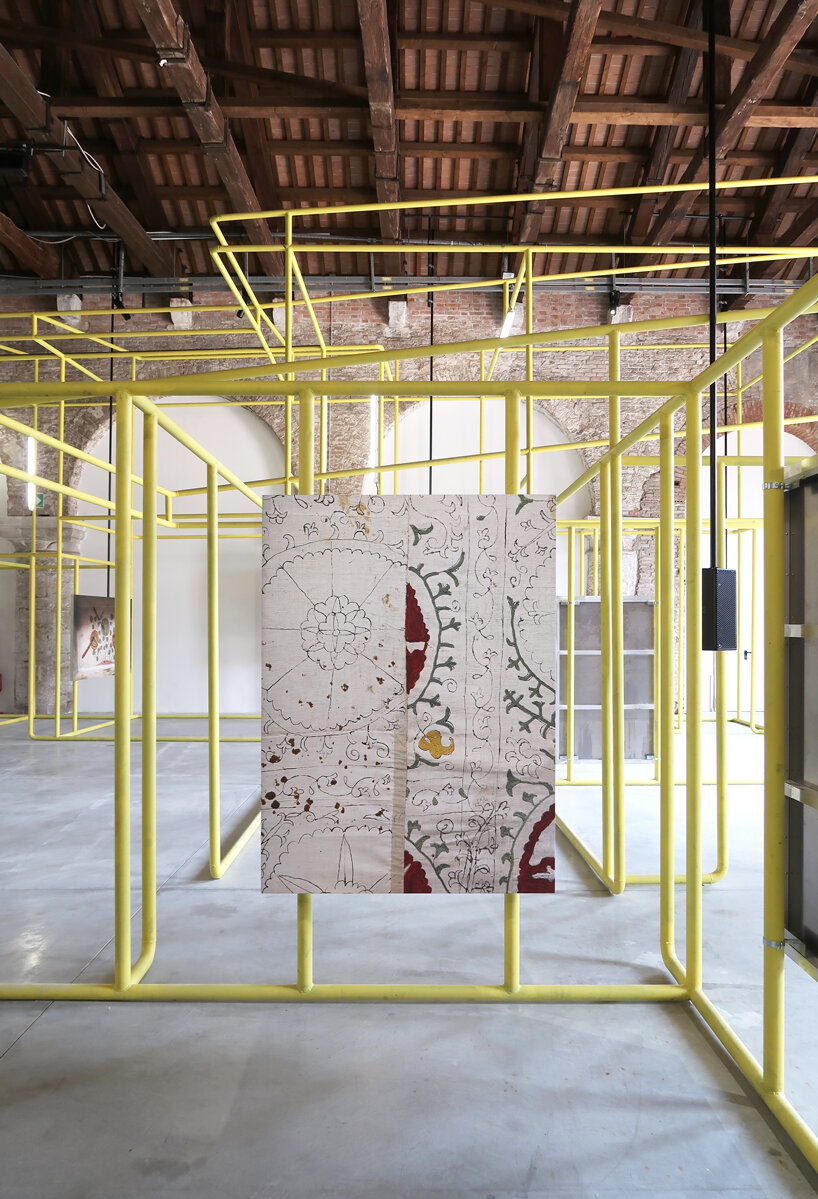
image © designboom
DB: how does it address the biennale’s question?
EC: our project is an important contribution to the current discussion about how we imagine the city. it is also directly linked to hashim sarkis’ question. as an architect and academic, I observe that the mantra of the densified city, the mega city, all these developments of the last 20 years, which are not necessarily a bad thing, might have reached their limits. for good reasons, we must speak about the presence of nature and the microclimate of a city. we must speak about the social structure of our communities. we must consider alternative models. which could rely on a combination of different examples, this is why I believe that this project can make a significant contribution.
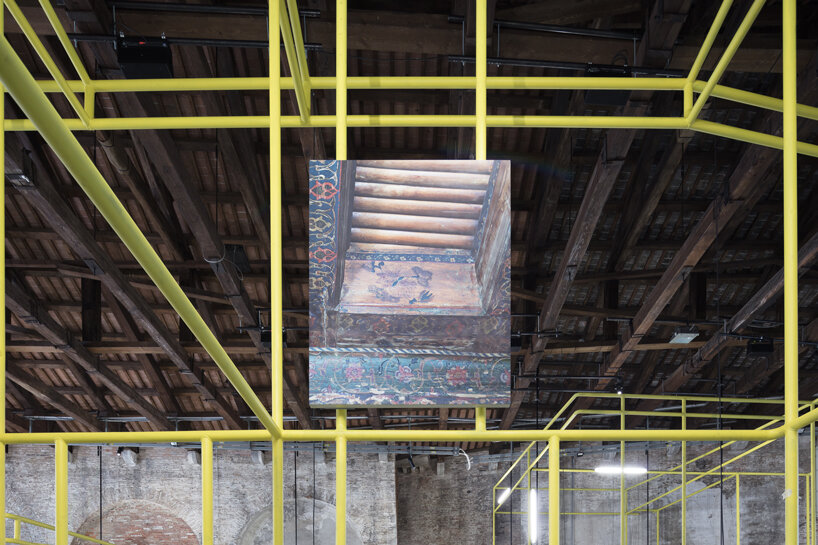
image © gerda studio
DB: what about the mahalla, specifically?
EC: let’s look at the urban rural living that characterizes the mahalla. multi-generational, or inter-generational living, has been the most obvious and maybe the most efficient way of living together for many centuries. for example, the house that forms the basis of our installation in the arsenale accommodates two or three generations living together. it’s a rather big house, and there’s a fantastic garden in the center. imagine our wireframe model here: 18 people would inhabit this place and have guests and neighbors. a certain size of community that gives you comfort is also something to be rediscovered.
we should be careful not to romanticize or to idealize such a constellation. but for sure, there is something to learn and to take home from that. that’s why I think it’s worth studying and communicating.
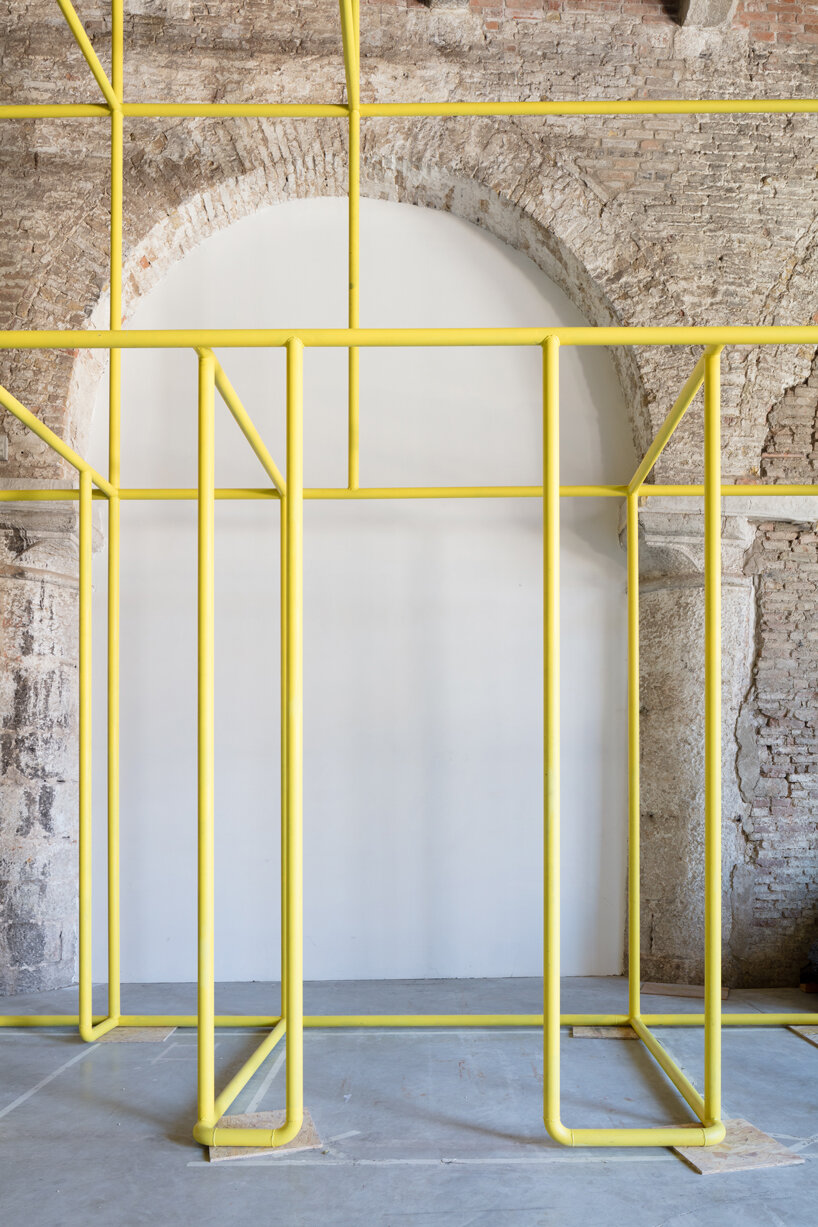
image © gerda studio
DB: you mentioned that we should consider alternative models. are you referring to sustainability?
EC: this is, of course, another big issue: we simply cannot afford to just turn over our built environment and rebuild major parts of our cities any longer. we must think about natural resources and ecology on a big scale: this is not an option anymore but a necessity. and one way to address this is to get even more interested in the existing built matter.
through our practice and through our research unit, we try to make a contribution to this discussion and, even if minor, to contribute to a slight shift in politics: we must consider transforming or improving existing building structures. as an optimist, I see some signs that give me hope. recently, I learned that tashkent’s city administration decided to stop the demolition of the mahallas. even if they might not be beautiful or fancy or possess a touristic value.
maybe I’m a bit too optimistic, but, after all, we are architects, and by definition, we have to be optimistic.
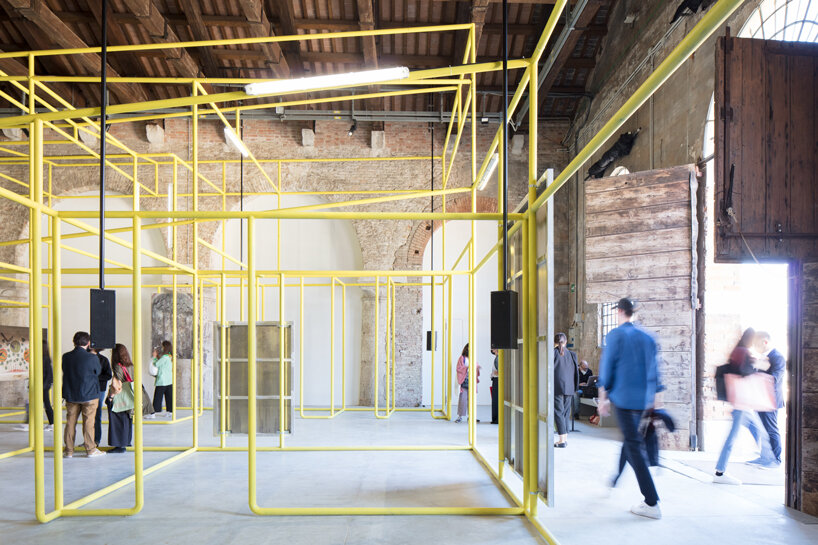
image © gerda studio
DB: what’s the main thing you hope people will take away from this exhibition?
EC: that it is worth discovering the world and being curious. that it is important to look at what is around us, even in the mundane and the everyday, where we find beautiful things and inspirational concepts that teach us that there is much more than we already know. more specifically, I believe there are ways of building houses, neighborhoods and cities where the presence of nature and community is central and has a strong value. that’s what I think we can take away from this project and exhibition.
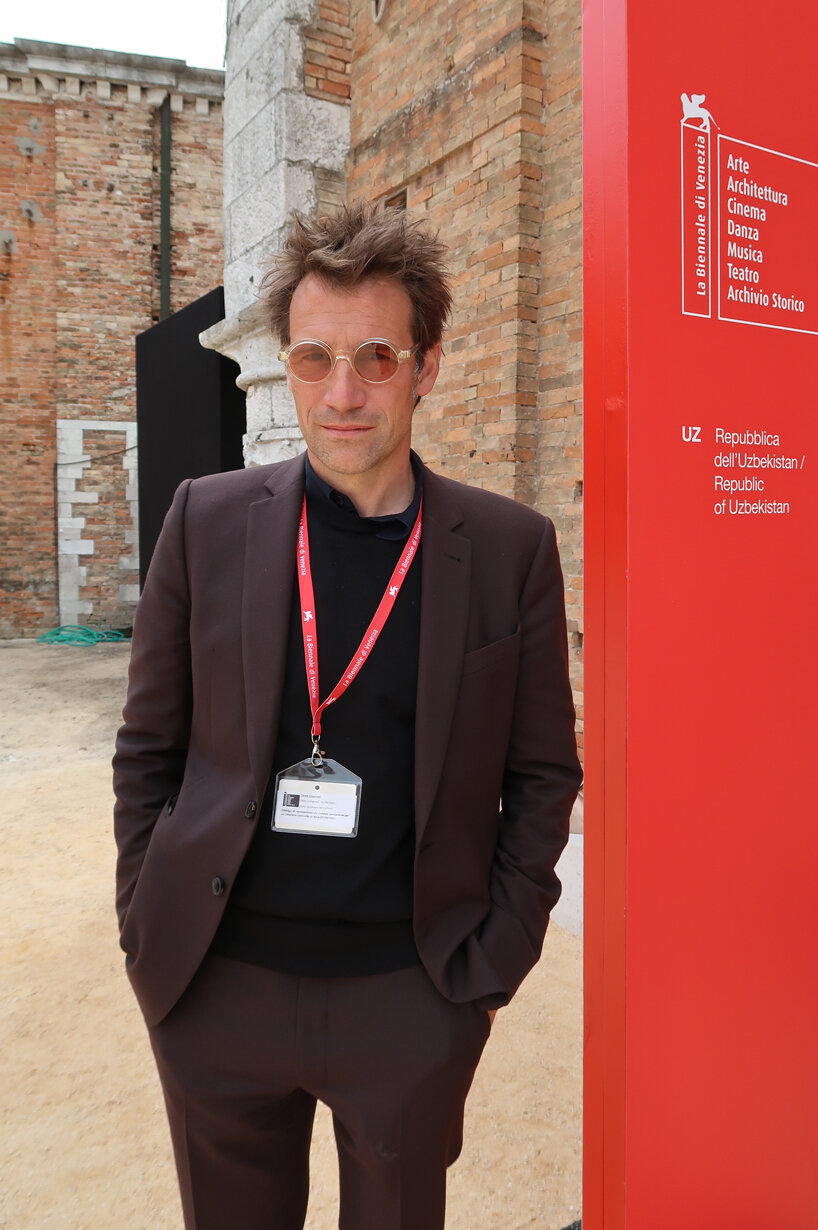
emanuel christ of christ & gantenbein
image © designboom







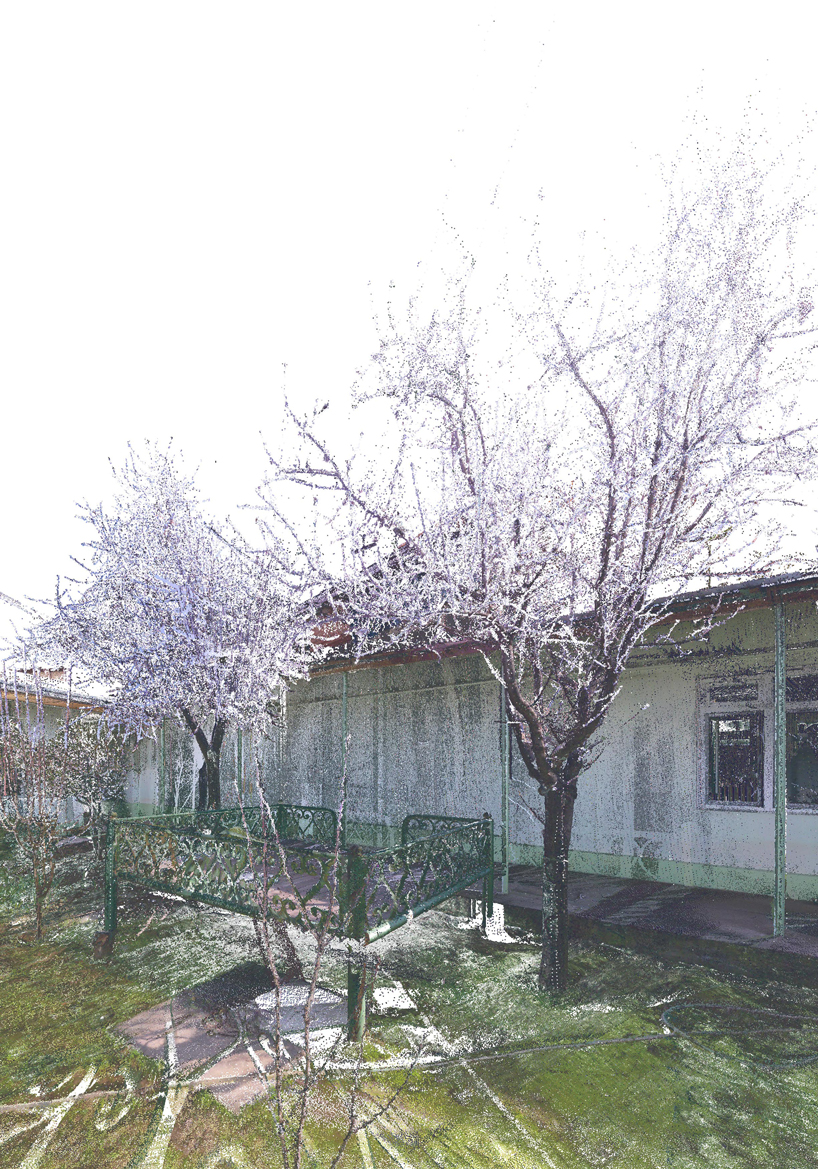
project info:
name: mahalla: urban rural living
location: arsenale, venice
event: 17th international architecture exhibition – la biennale di venezia
commissioned by: the art and culture development foundation under the ministry of culture of the republic of uzbekistan
curators: emanuel christ and christoph gantenbein of christ & gantenbein
venice architecture biennale 2021 (76)
PRODUCT LIBRARY
a diverse digital database that acts as a valuable guide in gaining insight and information about a product directly from the manufacturer, and serves as a rich reference point in developing a project or scheme.
